M8.7 coronal mass ejection, sunspot region 2241 & 2242
Wednesday, 17 December 2014 15:43 UTC
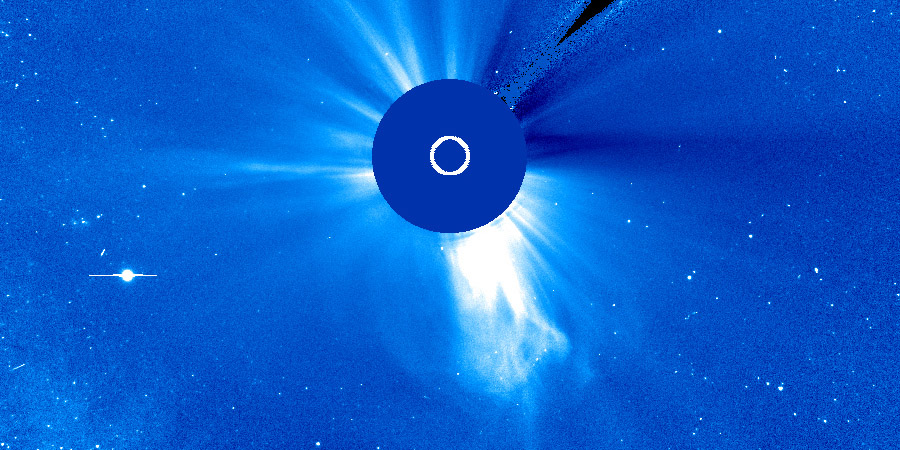
Solar activity today is at high levels thanks to the M8.7 solar flare that occurred this morning at 04:51 UTC. For more information regarding this solar flare we advice you to read the article that we posted this morning. Coronagraph imagery from SOHO is now complete and shows that this solar flare indeed launched a coronal mass ejection.
The good news ends there. While there was indeed a coronal mass ejection associated with the M8.7 event, there does not seem to be a significant earth-directed component. The bulk of the ejecta is heading well south of the Sun-Earth line and there is no halo outline to be seen. Below you will find two animations showing the M8.7 coronal mass ejection as seen by ESA/NASA SOHO.
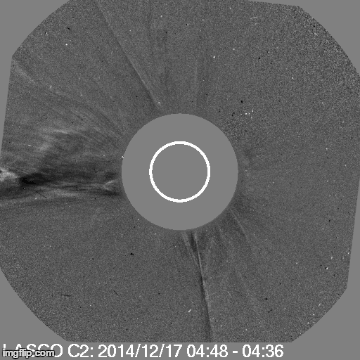
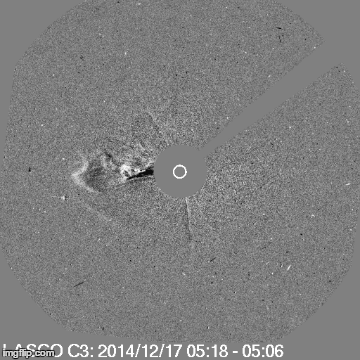
It is likely that this coronal mass ejection will miss Earth completely but a weak extension can be seen heading east of the frame (better seen on LASCO C2) indicating that there might be some ejecta heading slightly more north and thus towards Earth. A significant impact is however unlikely and a weak shock passage is all that we should expect from this event and would be the best possible scenario.
If we take a look at the speed of the ejecta we estimate it to be around 600 to 650km/s which is very average for a coronal mass ejection. Should we see any effects on this coronal mass ejection here at Earth it would arrive on Saturday, 20 December. No geomagnetic storming is however to be expected.
The NOAA SWPC did release an ENLIL model run where they expect an impact on Friday, 19 December.
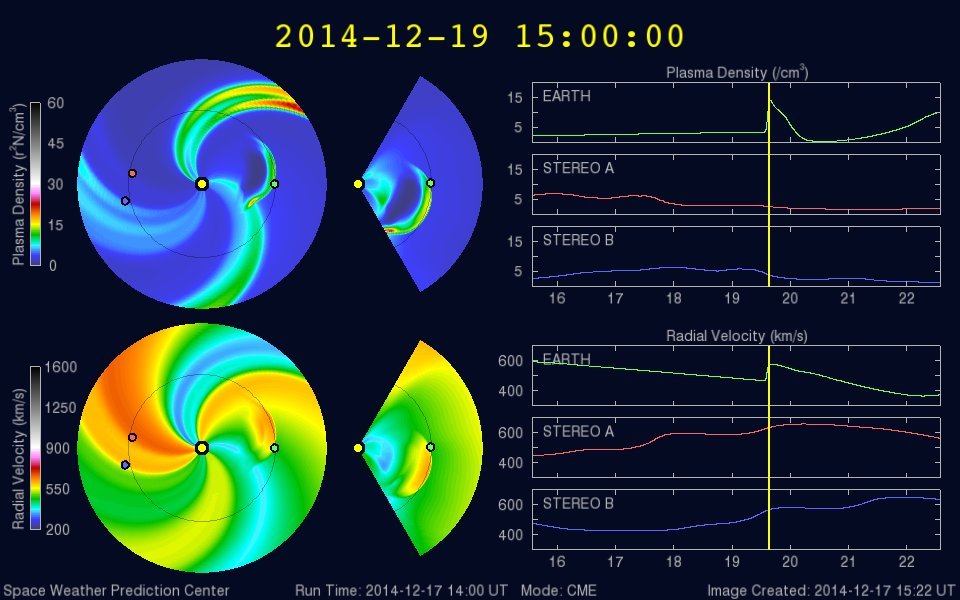
Sunspot region 2241 and 2242
We already looked at these sunspot regions this morning but we will again take a look now as sunspot region 2241 is showing some promising signs:
Sunspot region 2241 continued to develop since this morning and now also has a Beta-Gamma-Delta magnetic layout. It has atleast two developing delta sunspots in it's trailing sunspot area. Sunspot region 2241 has the potential to produce an M-class event in the next 24 hours.
Star of the show remains sunspot region 2242 which didn't change very much since this morning but it does continue to develop and gain in magnetic complexity. We didn't even bother to indicate the deltas on the images below as the entire leading area is one large delta that continues to grow and change. More M-class solar flares are likely with an ever increasing chance for an X-class event.
M-class flare probability for the coming 24 hours: 60% chance
X-class flare probability for the coming 24 hours: 20% chance
It is worth noting that both sunspot regions are facing Earth right now and could launch an earth-directed coronal mass ejection. All the other sunspot regions on the earth-facing disk are unremarkable. Any activity will likely come from sunspot region 2241 or 2242. Keep your attention on our nearest star in the coming days as more flares are very much possible!
The images below show sunspot regions 2241 and 2242 as seen by NASA SDO.
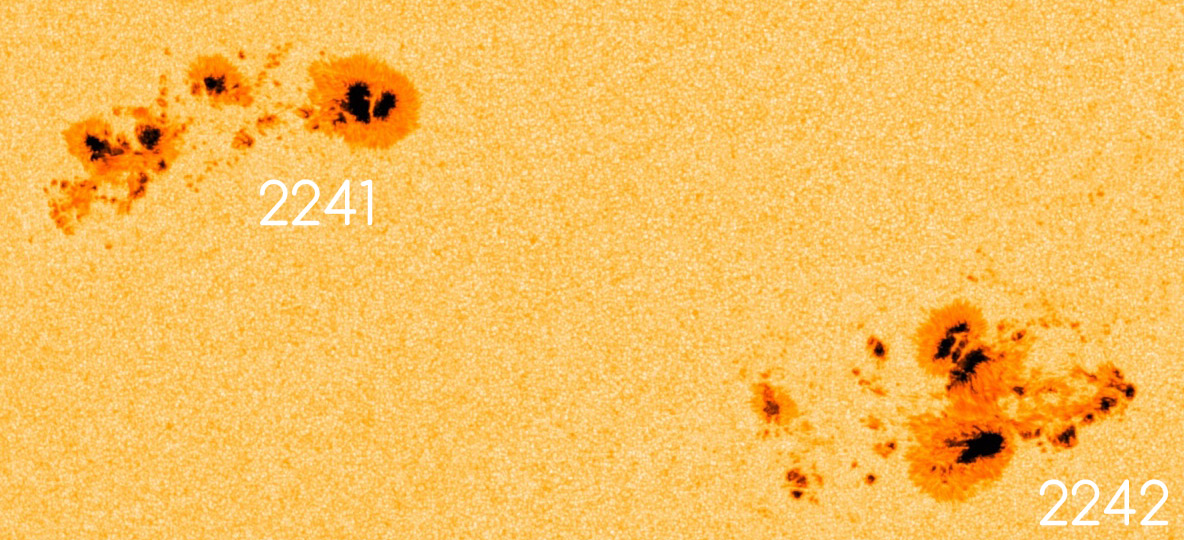
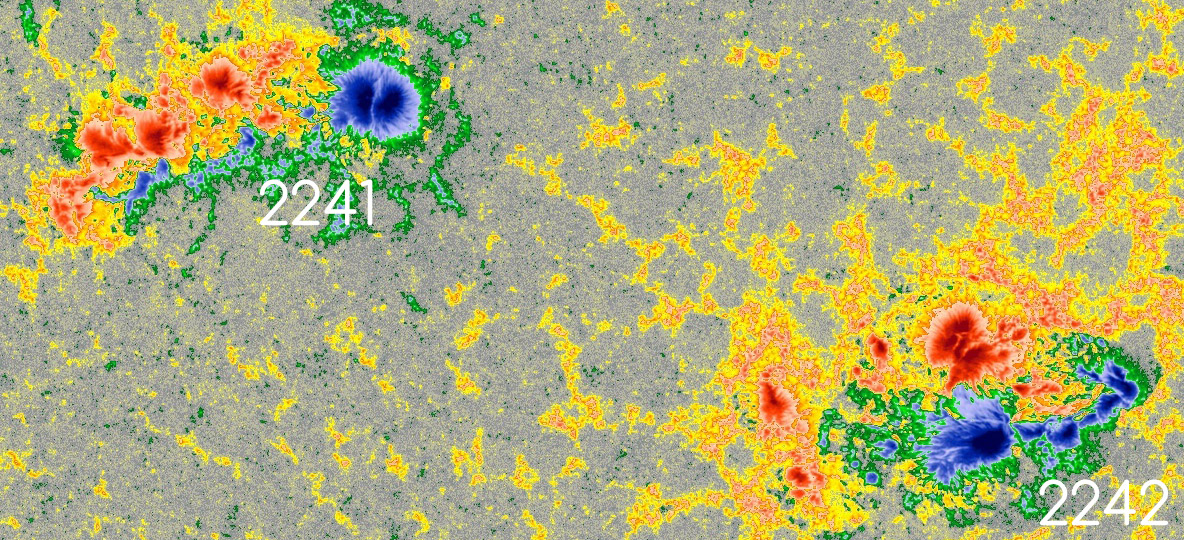
Images: NASA SDO and ESA/NASA SOHO.
Thank you for reading this article! Did you have any trouble with the technical terms used in this article? Our help section is the place to be where you can find in-depth articles, a FAQ and a list with common abbreviations. Still puzzled? Just post on our forum where we will help you the best we can!
Latest news
Latest forum messages
Support SpaceWeatherLive.com!
A lot of people come to SpaceWeatherLive to follow the Sun's activity or if there is aurora to be seen, but with more traffic comes higher server costs. Consider a donation if you enjoy SpaceWeatherLive so we can keep the website online!

Space weather facts
| Last X-flare | 2025/03/28 | X1.1 |
| Last M-flare | 2025/03/31 | M1.2 |
| Last geomagnetic storm | 2025/03/27 | Kp5 (G1) |
| Spotless days | |
|---|---|
| Last spotless day | 2022/06/08 |
| Monthly mean Sunspot Number | |
|---|---|
| February 2025 | 154.6 +17.6 |
| March 2025 | 127 -27.6 |
| Last 30 days | 127 -25.7 |


